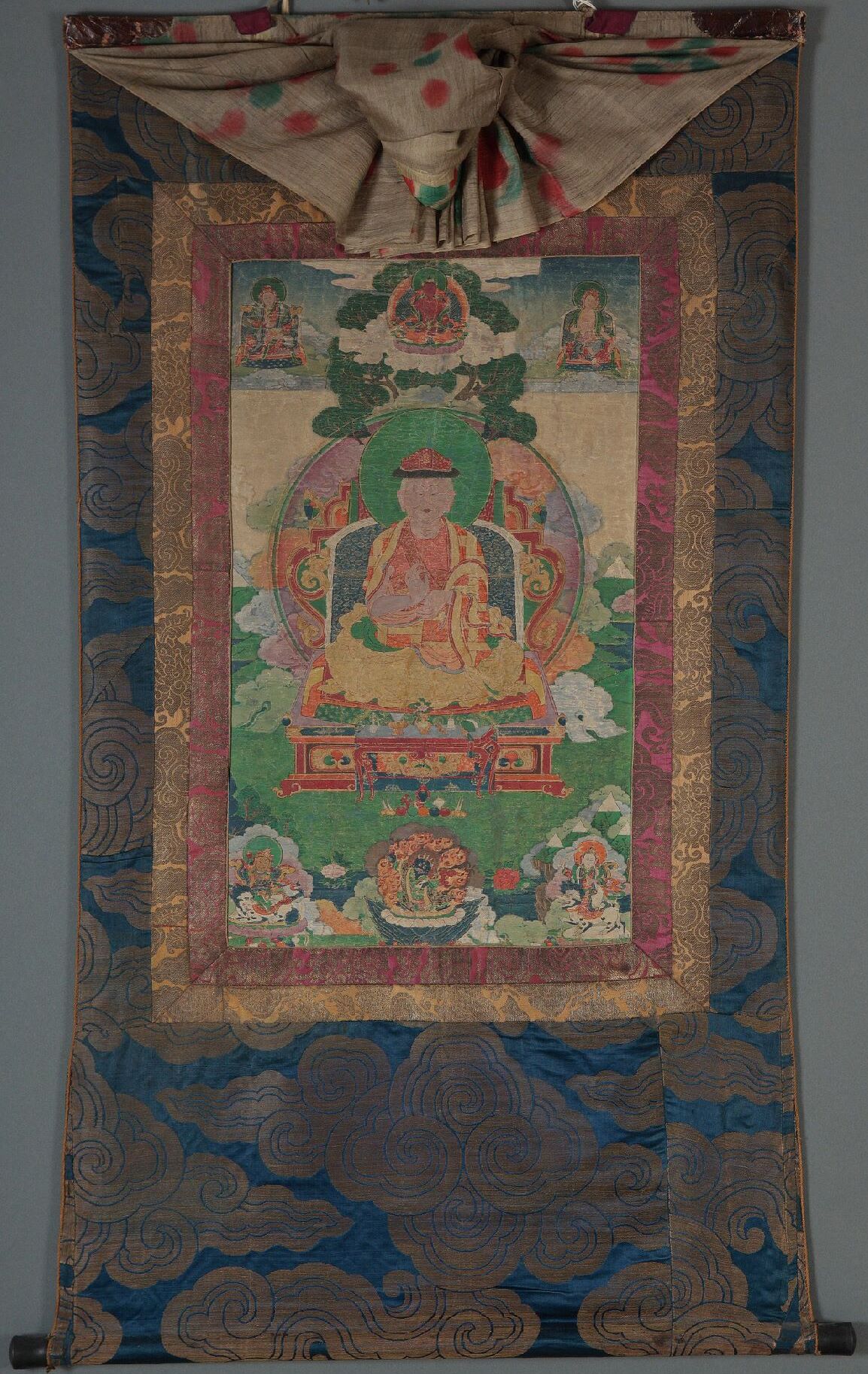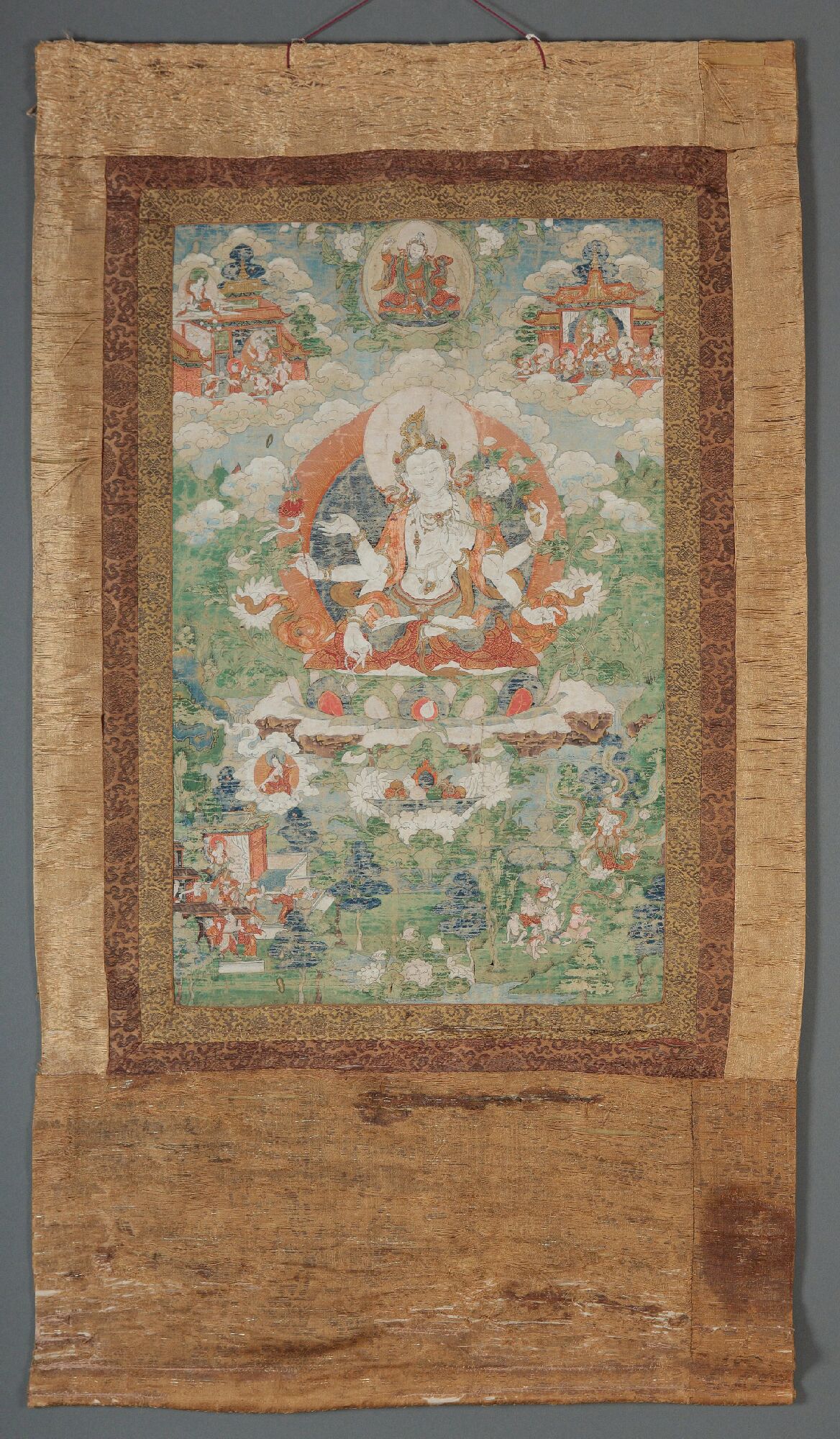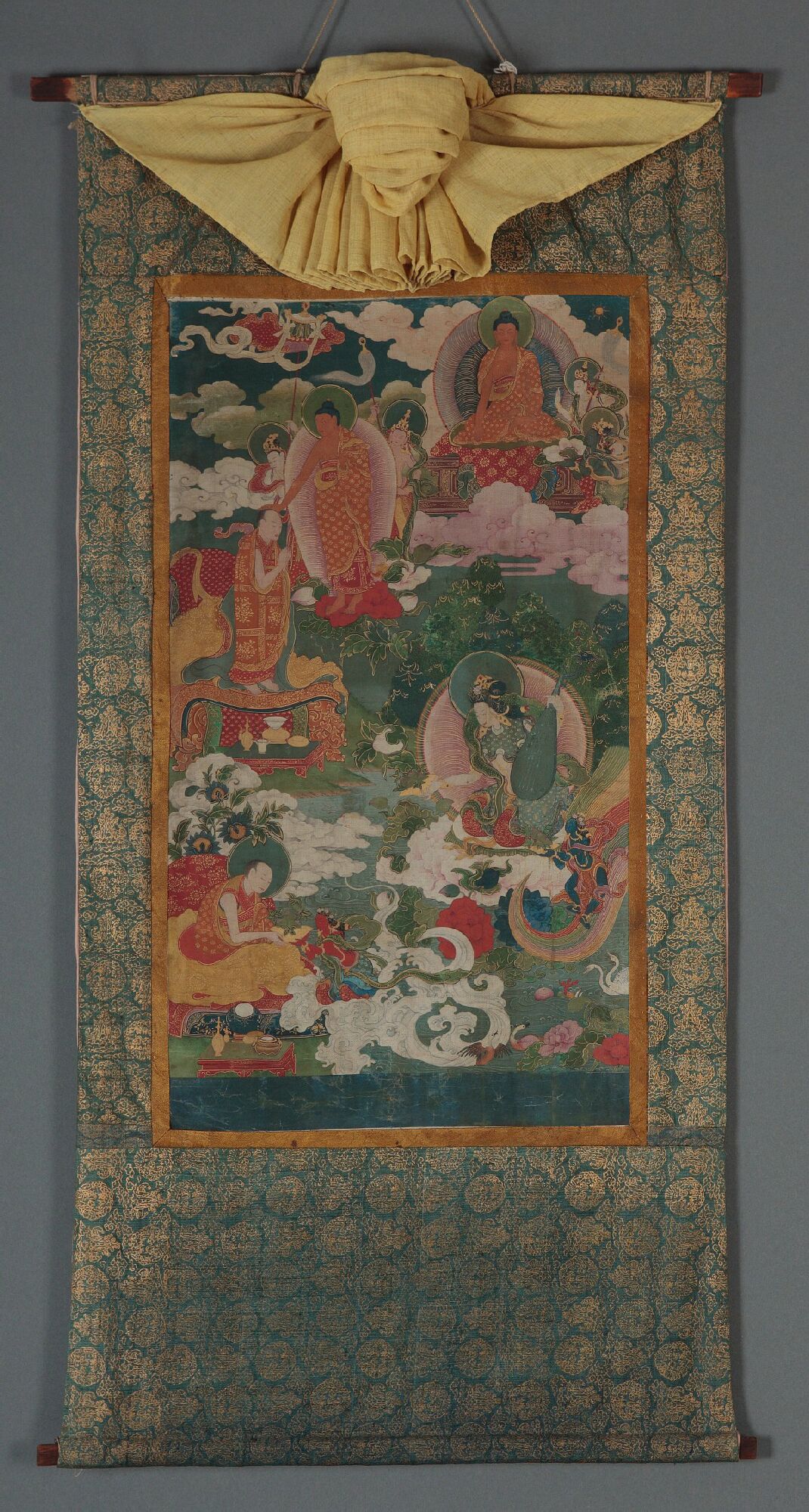Buddhist practice and Buddhist art have been inseparable in the Himalayas ever since Buddhism arrived to the region in the eighth century. But for the casual observer it can be difficult to make sense of the complex iconography. Not to worry—Himalayan art scholar Jeff Watt is here to help. In this “Himalayan Buddhist Art 101” series, Jeff is making sense of this rich artistic tradition by presenting weekly images from the Himalayan Art Resources archives and explaining their roles in the Buddhist tradition.
Himalayan Buddhist Art 101: New Discoveries

Just recently an old but essentially unknown collection of Tibetan paintings was uncovered at the Beinecke Rare Book & Manuscript Library at Yale University. The paintings were found somewhere in storage all rolled up and probably dusty. The discovery was a great surprise to many of the people working in Himalayan studies at the university, and the staff at Himalayan Art Resources as well. Even though some major museums and private collections don’t appear on the HAR website, the HAR team is at least aware of their existence. This, however, is often not the case with smaller museums, university libraries and private collections. There are likely hundreds of Himalayan and Tibetan art collections full of wonderful treasures and rare works of artistic, religious, and historical importance that remain unknown.
The Beinecke Library collection is a very eclectic group of Himlayan-style paintings that are primarily from Tibet, but also include works from Nepal, China, and Mongolia. At least a third of the compositions are not intended as single works but belong to larger sets of paintings. Three of these works belong to previously unknown sets of paintings, the overarching subjects of which are unique. The paintings shown here date from the 18th and 19th centuries.

The first sample, from Eastern Tibet, depicts a Tibetan teacher named Chokyi Gyatso of the Karma Kamtsang tradition. He is most likely one of two famous teachers: Treho Chokyi Gyatso or Ngagwang Chokyi Gyatso, the 2nd Karma Thinlepa. Both lived in the 15th and 16th centuries. Neither of these two teachers, nor their incarnation lines, have been known to be represented in dedicated painting sets.
The second painting is of the deity Amoghapasha, and is associated with the Bodhisattva of Compassion Avalokiteshvara. He has one face and six hands, is white in color and peaceful in appearance. The scenes surrounding the central figure narrate an unknown story likely to become clear once the Amoghapasha composition is placed in the context of the full set of paintings. Although the painting is very faded, the artistic skill involved in its drawing and composition is readily apparent.

The last example illustrates a continuous narrative of a seated Tibetan Buddhist monk (at the lower-left) receiving offerings from three female goddesses. Above that scene, the monk is again depicted, now standing and receiving a blessing from the hand of the Buddha. The style of painting and specific iconographic characteristics are in keeping with depictions of the previous life stories of the Panchen Lamas. However, the nature of the events and identification of the figures remain a mystery.
These are three very good examples of what can still be discovered. In particular, these paintings and the Beinecke Collection show how the field of Buddhist art is expanding and becoming ever richer with the discovery of new collections.